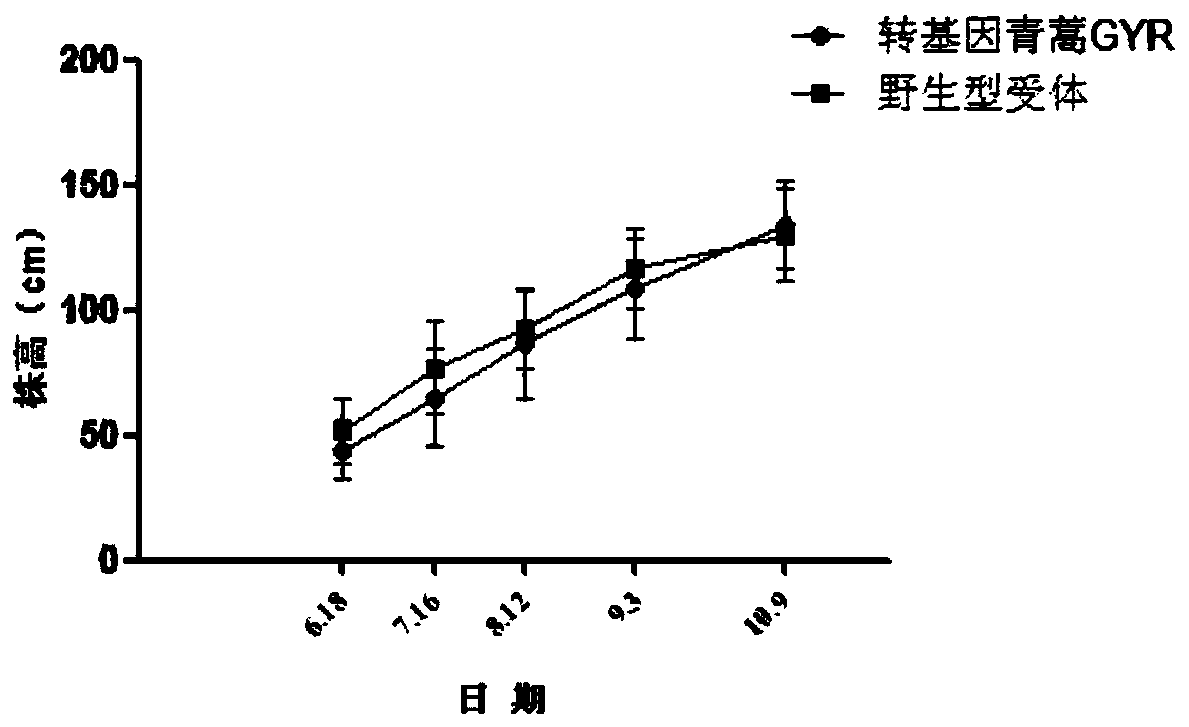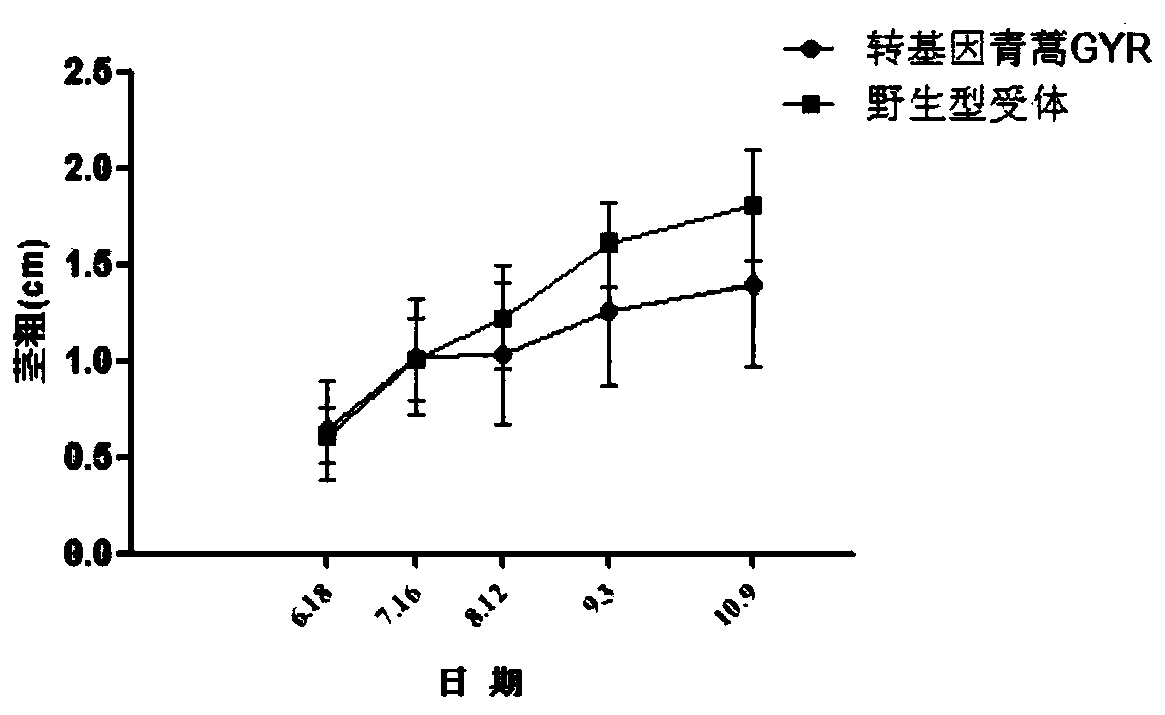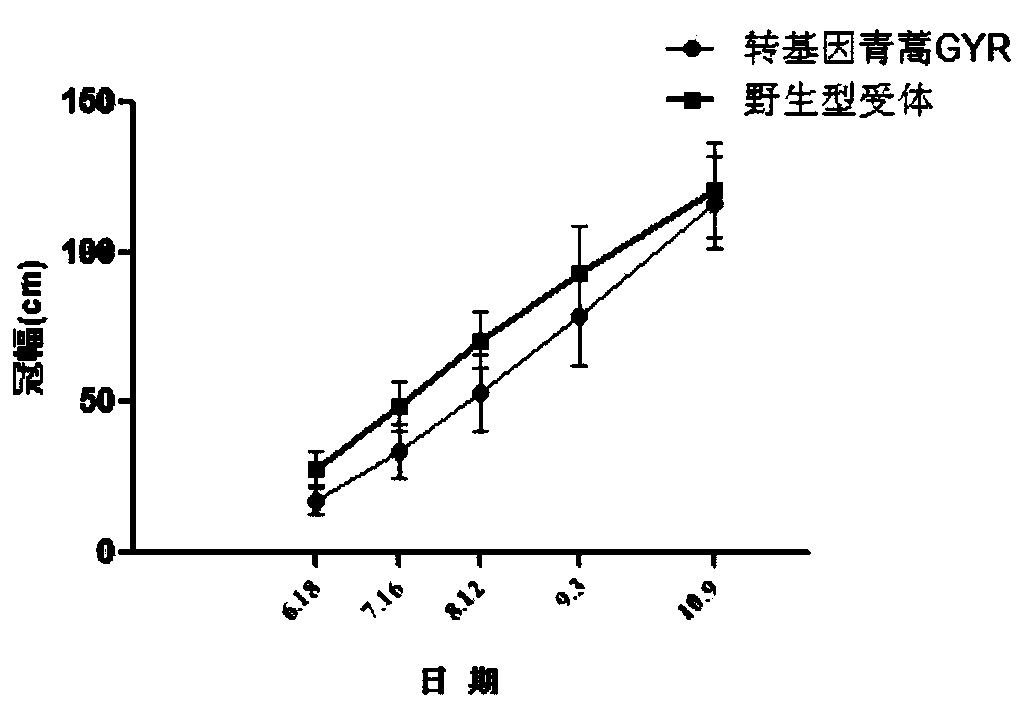A method for environmental safety assessment of transgenic Artemisia annua
A technology of environmental safety and evaluation method, applied in the field of safety evaluation of transgenic plants, can solve problems such as unreported research on transgenic artemisia annua, and achieve a good demonstration effect.
- Summary
- Abstract
- Description
- Claims
- Application Information
AI Technical Summary
Problems solved by technology
Method used
Image
Examples
Embodiment
[0056] Embodiment A method for environmental safety assessment of transgenic Artemisia annua, comprising the following steps:
[0057] 1. Prepare the experimental site for the evaluation of agronomic traits
[0058] According to China’s GMO safety assessment regulations, Artemisia annua was planted in a rectangular experimental site covering an area of about 0.3 hectares, 100 m long and 30 m wide; wild-type recipient maize was planted around each area to isolate GYR and Wild-type recipients; all plants were cultivated in corresponding areas according to conventional methods, and about 2304 plants were planted in each area (the row spacing was 1.25m).
[0059] 2. Detection of agronomic traits
[0060] The transgenic Artemisia annua GYR and wild-type recipients were grown in the greenhouse for 2 months, and then transplanted to the field to continue to grow. After transplantation, the number of dead seedlings was counted. Three months after transplantation, the growth and mo...
PUM
 Login to View More
Login to View More Abstract
Description
Claims
Application Information
 Login to View More
Login to View More - R&D
- Intellectual Property
- Life Sciences
- Materials
- Tech Scout
- Unparalleled Data Quality
- Higher Quality Content
- 60% Fewer Hallucinations
Browse by: Latest US Patents, China's latest patents, Technical Efficacy Thesaurus, Application Domain, Technology Topic, Popular Technical Reports.
© 2025 PatSnap. All rights reserved.Legal|Privacy policy|Modern Slavery Act Transparency Statement|Sitemap|About US| Contact US: help@patsnap.com



